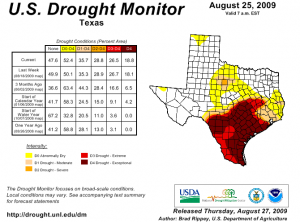Don DeLillo has a great line in “Underwold” describing how, at a night baseball game, under the lights, “the players seem completely separate from the night around them.”

Something in excess of a quarter of a century ago, Lissa and I went to baseball games while we were falling in love, and we’ve been going ever since. It’s an odd thing, because neither of us are huge sports fans. We just love going to ballgames together.
We lived in South Pasadena, which is just up the freeway from Dodger Stadium, and Lissa had this great secret parking space that I won’t tell you about, because we might go back. I thought she was so cool, because she had a secret Dodger Stadium parking space. We’d go early enough to park there for free, because we didn’t have a lot of money, and we’d walk in and sit in the way upper deck behind home plate, the red seats, and scarf hot dogs for dinner. Or we’d sit in the better seats when I had a crack at the free tickets I sometimes got at work.
When we were moving to Albuquerque, we left Nora (she was two) with Lissa’s sister Ginnie and flew in for a weekend to find an apartment. We’d nailed it down by Saturday night, so Sunday afternoon we went out to Duke stadium to catch a ballgame. If you’ve never seen baseball in Albuquerque, you’re missing one of the sport’s great treats. The stadium faces the Sandia Mountains, and you can watch baseball or just sit and gaze quietly into the desert. Back then, the Dukes were the Dodgers’ farm team, so there was a sweet transition in our baseball life.
We end up at the ballpark all the time these days, not because we’re huge fans of what are now known as the Albuquerque Isotopes, but because we love the idle pace of a night watching those players, separate from the night around them. The ‘Topes, our team today, is the Dodger farm team again, so a certain symmetry has been restored.
Minor league baseball is different from major league ball, but it has a joy all its own. The players are often very good, but sometimes not quite. There’s a quirky unpredictability about it.
Saturday night we watched the ‘Topes play the Nashville Sounds. In the fourth, the ‘Topes’ first two hitters, second baseman Luis Maza and third baseman Hector Luna, both singled. Left fielder Dee Brown came to the plate with runners on first and second and hit a long drive to deep center field.
Standing at second, Maza froze, waiting to make sure the center fielder would not catch the ball. Luna, a base behind him, had no such caution, and broke immediately, so that by the time the ball fell safely just beyond the Nashville center fielder’s grasp, Luna had caught up to the runner ahead of him, and the two-person train took off, Luna rounding third base just a couple of strides behind Maza.
It was one of those baseball plays that seems to play out in slow motion, where you’re not quite sure where to look – Maza and Luna barreling for home, the throw coming in to the relay man (The shortstop? I’m still not sure.) who turns and fires to home.
The throw beat the two runners by a good ten feet, so you’ve got what I can only assume was a bemused Nashville catcher standing there while not one but two baserunners bore down on him. All he had to do was hang onto to the ball, apply tag one and tag two, which he did. The strangest double play I’ve ever seen in my many years of watching baseball.
I’m not sure how to properly score it, but I’ve got an “8-?-2” for both Maza and Luna on my score sheet. It was, for sure, one of the most entertaining plays I’ve ever seen, but I probably say that every time we go out to the ballpark.
I was Twittering later with fellow scribe Steve Terrell, who it turns out was also at the game, about the play.
Me: “It’s the charm of Triple A ball. Some great baseball, plus endless surprise.”
Said Terrell: “AAA ball is the punk rock of baseball.”
We sing “Take Me Out to the Ballgame” and do the YMCA dance with the Village People (“the Gay Song“!). We cheer the latest addition to AAA schtick, a little girl named Sophie who sweeps off the bases once a night between innings and swats the home plate umpire on the butt with her broom while Cyndi Lauper sings “Girls Just Wanna Have Fun” over the PA. It was a hit in 1983, the year Lissa and I fell in love.
from Amazon. It’s a cool gizmo. I highly recommend it. You point it at whatever, and it tells you the object’s temperature based on infrared emissions. Today, Amazon informed me that people who bought the Actron PocketTherm also might like this:







